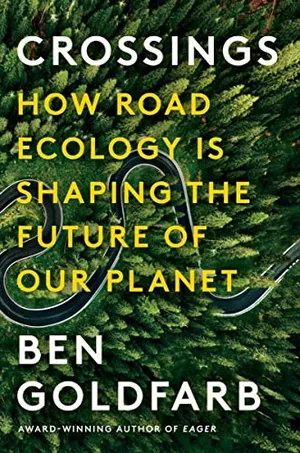
Ben Goldfarb
Author of Crossings
When alien archaeologists exhume the rubble of human civilization, they may conclude that our raison d’être was building roads. Some 40 million miles of roadways encircle the Earth, from the continent-spanning Pan-American Highway to the hundred thousand miles of illegal logging routes that filigree the Amazon. Our planet is burdened by perhaps 3,000 tons of infrastructure for every human, nearly a third of an Eiffel Tower per person. Roads predate the wheel: Mesopotamian builders began laying mud-brick paths in 4000 B.C.E., centuries before anyone thought to drop a chariot onto a couple of potter’s disks. Today it’s impossible to imagine life without the asphalt arteries that connect goods with markets, employees with jobs, families with each other. “Everything in life is somewhere else,” wrote E.B. White, “and you get there in a car.”
Roads are both logistical essentials and cultural artifacts. They epitomize freedom—the “architecture of our restlessness,” per Rebecca Solnit, the “two lanes [that] take us anywhere,” per Bruce Springsteen. To us, roads signify connection and escape; to other life-forms, they spell death and division. Sometime during the 20th century, scientists have written, roadkill surpassed hunting as “the leading direct human cause of vertebrate mortality on land.” Name your environmental ill—dams, poaching, megafires—and consider that roads kill more creatures with less fanfare than any of them. (More birds die on American roads every week than were slain by the Deepwater Horizon oil spill, with the road deaths accompanied by a fraction of the hand-wringing.) And it’s only getting worse as traffic swells. A half-century ago, just 3 percent of land-dwelling mammals met their end on a road; by 2017 the toll had quadrupled. It has never been more dangerous to set paw, hoof or scaly belly on the highway.
Roads distort the planet in other, more insidious ways. No sooner was Rome’s Via Cassia completed around 100 B.C.E. than its surface began to shed sediment into Lago di Monterosi, spawning algal blooms that permanently dis …
Read the full article on infrastructure development in Arizona, or, read more news about real estate investing in Arizona. We encourage you to recommend our site to your fellow investors, letting them benefit from the valuable insights we provide. Thanks!




